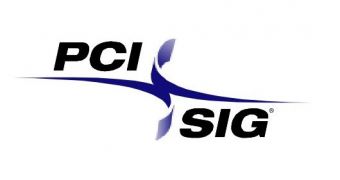Today marks the conclusion of the second decade since the creation of the Peripheral Component Interface (PCI), so the Special Interest Group is understandably satisfied and excited.
That doesn't mean that the PCI SIG is going to take a vacation and let the IT industry sort out its own needs for a while.
In fact, this 20-year anniversary marks the start of a different set of concerns that need to be raised and addressed, with respects to the further development of the standard.
Until now, the main problem that had to be surmounted was the bandwidth, and it wasn't precisely a small challenge.
Now, though, PCI-SIG has to create more compact versions of the interface, as demanded by smaller consumer electronics, particularly tablets and laptops.
Fortunately, the PCI Express 3.0 standard is already here and the PCI Express 4.0 will be able to push 16 GT/s on a single lane. In other words, the bandwidth side of the equation is well enough covered.
That leaves portability and proliferation to newer and smaller form factors, and there might already be an answer to that: OCuLink.
Much like Universal Serial Bus (USB) and Thunderbolt, OCuLink is a cable-based standard that lets two devices communicate without host-device help. There should be minimal protocol overhead.
OCuLink is based on PCI Express 3.0 and offers bit rates starting at 8 Gbps (room to scale), plus independent clock integration. So with four PCIe lanes of 8 GT/s, that leads to 32 Gbps in each direction (one-lane and two-lane configurations will exist too).
As for the new form factor, we know of the Mini CEM so far, and the SFF-8639 (for PCIe-attached storage devices).
“Each new technical innovation is a testament to the importance of PCI-SIG, providing our membership and the computing industry with future-focused technology, ensuring that increased performance is among one of our top priorities,” said Al Yanes, PCI-SIG president and chairman. “We plan to celebrate 20 years of innovation by continuing to seek new ways to deliver PCIe technology across a variety of computing platforms.”

 14 DAY TRIAL //
14 DAY TRIAL //